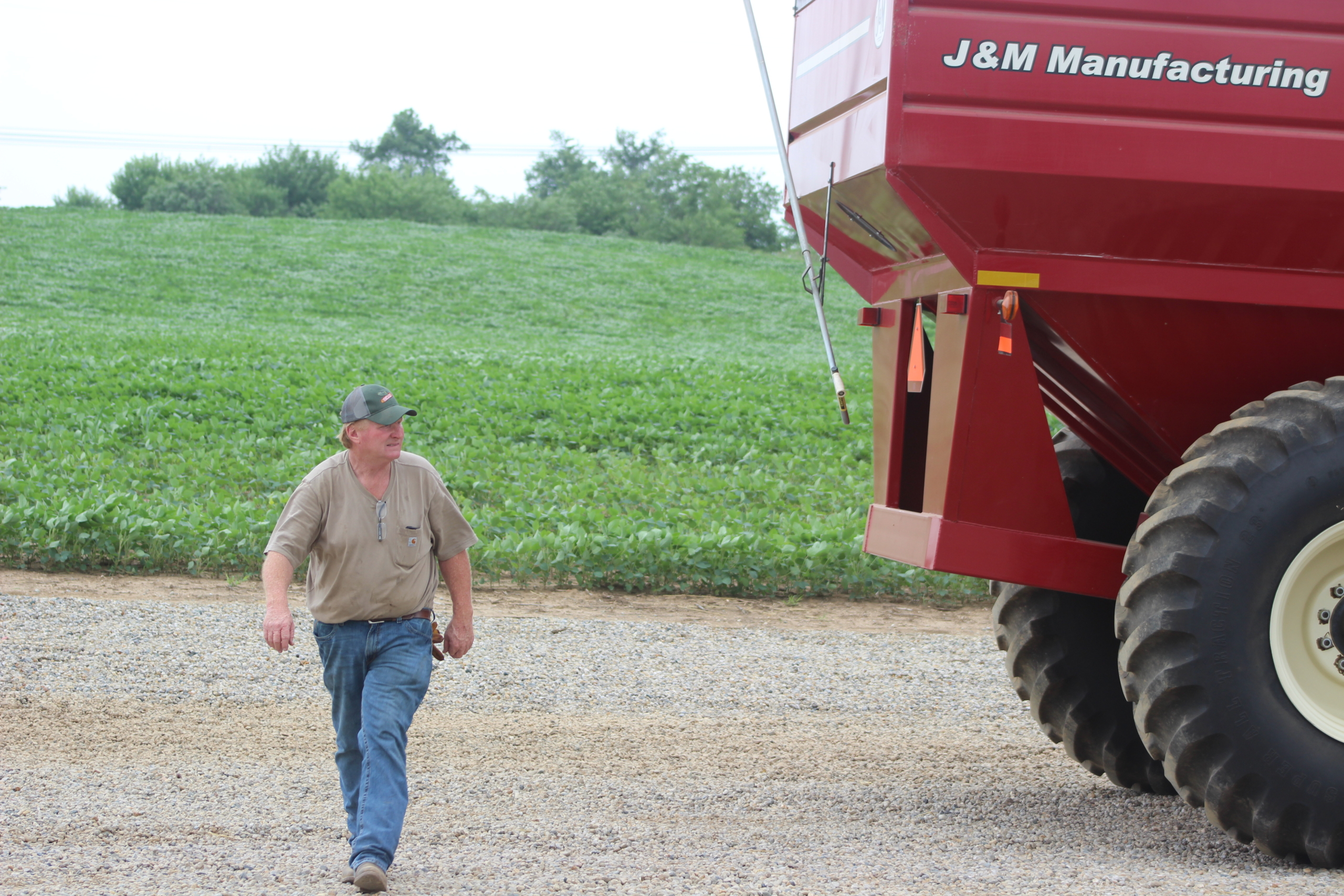Profiling U.S. Wheat Sustainability: John Hoffman, Soft Red Winter Wheat Farmer
By Elizabeth Westendorf, USW Policy Specialist
John Hoffman farms some of the same land that four generations of his family have managed since the late 1800s. Today, the farm covers roughly 3,200 acres where he grows corn, soybeans and soft red winter (SRW) wheat. For Hoffman, sustainability is key to preserving his family’s farming tradition for the next generation.
“I think we’re sustainable when every year we are able to plant a crop, harvest a crop, and do it again the next year,” said Hoffman. “If we are not sustainable, that would not happen — we would not stay in business every year.”
Hoffman believes being sustainable means being an early adapter of emerging practices on his farm. He tries to embrace the latest farming technologies to help improve his business, such as no-till and minimum till practices to improve soil health, GPS technology to increase accuracy and use inputs efficiently, and government conservation programs to give back to the environment.
Hoffman is the fourth of six U.S. wheat farmers featured in a USW series on wheat sustainability. These profiles show the differences in wheat production practices across the country and how those farming practices enhance the sustainability of U.S. agriculture.
“Family farming is a way of life, but it is also a large business,” said Hoffman. “Anything we can do to improve on what we do as business people, farmers and human beings to make things better, we are going to attempt to do it.”
A good example is how Hoffman uses a combination of no-till and minimum-till practices depending on crop need. No-till farming does not disturb the soil, which increases the amount of water that penetrates the soil surface and improves organic matter. Minimum-till helps warm the soil or reduce excess moisture. Both techniques reduce erosion compared to traditional tillage. He produces all his wheat and 80 percent of his soybeans with no-till technology, and he uses minimum tillage in corn production.
Access to better seed over the years has allowed Hoffman to improve his farming practices and use innovative techniques so that his farm is constantly improving. This story is true for many farmers, as plant breeding comes up with new varieties that respond to specific agronomic and economic challenges. That innovation is just another facet of the sustainability story.
“With the new genetics available in seed today, we can be more cost-effective and utilize less chemicals. That also made the no-till option a lot more practical,” said Hoffman. “Plus, the soil savings — the conservation aspect of it — we thought it was better for our land. It really helped reduce soil erosion.”
Another issue in Hoffman’s area is how farming affects water quality. By reducing soil erosion, he and other farmers reduce the amount of water that runs off their fields. Hoffman has also tried to reduce his inputs over the years to help with water quality and makes sure to use them intelligently — by not applying fertilizer on frozen ground or before a large rain, he makes sure that those inputs stay in the field instead of being washed away. On some of his land, he has been able to use government conservation programs and plant grass around the natural water runoff areas.
Hoffman’s farm has thrived because he has been able to innovate and adopt new technologies and practices over the years. At its core, that is what sustainability is about — constant improvement. Each of the farmers featured in USW’s Sustainability Profiles embody this idea. They do it in different ways, but with that one idea in common.
Learn more about Hoffman and his farm at www.uswheat.org/factsheets. U.S. farmers, ranchers, fishermen and foresters also share their values, sustainability experiences and conservation practices at the U.S. Sustainability Alliance.


